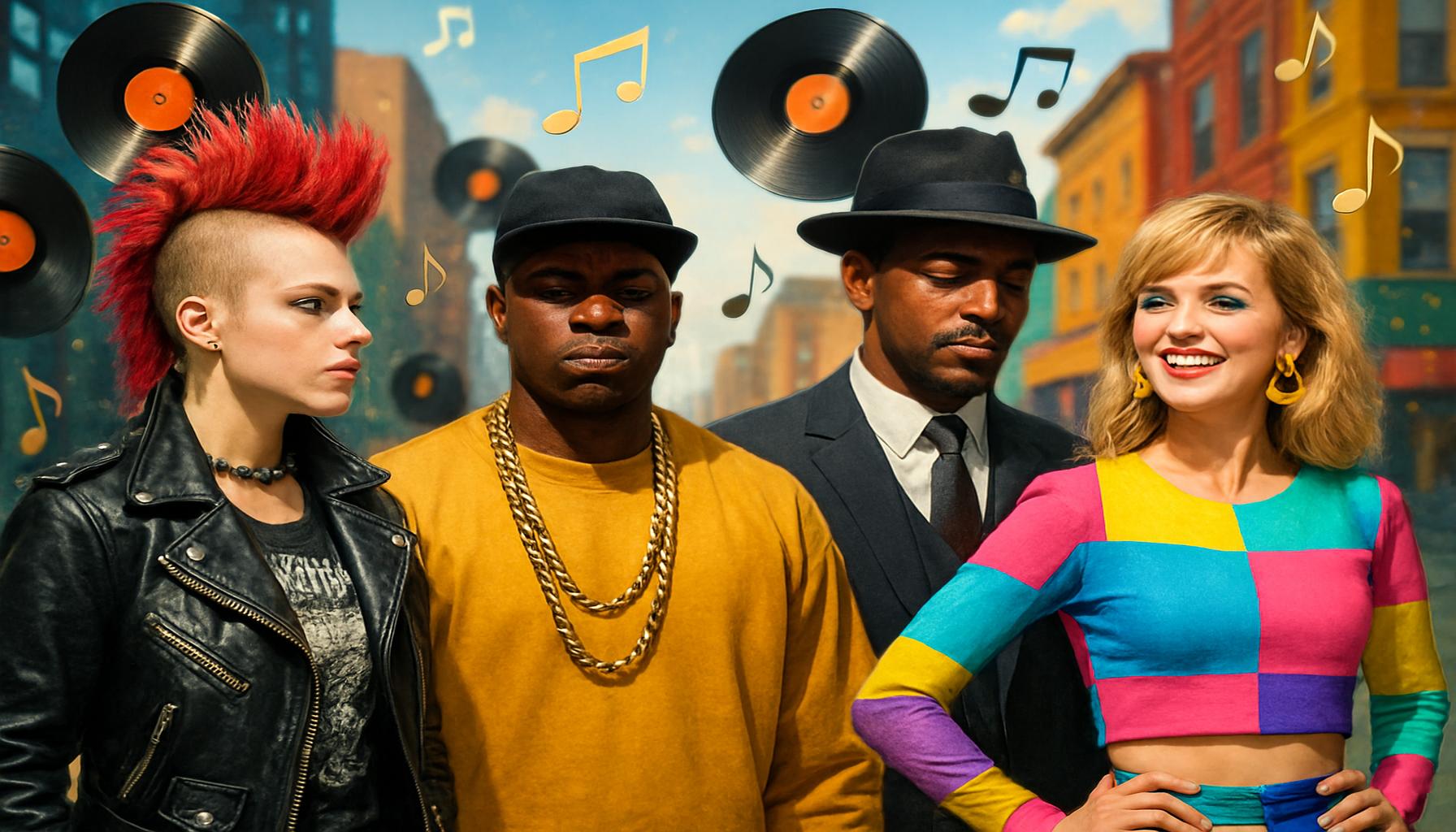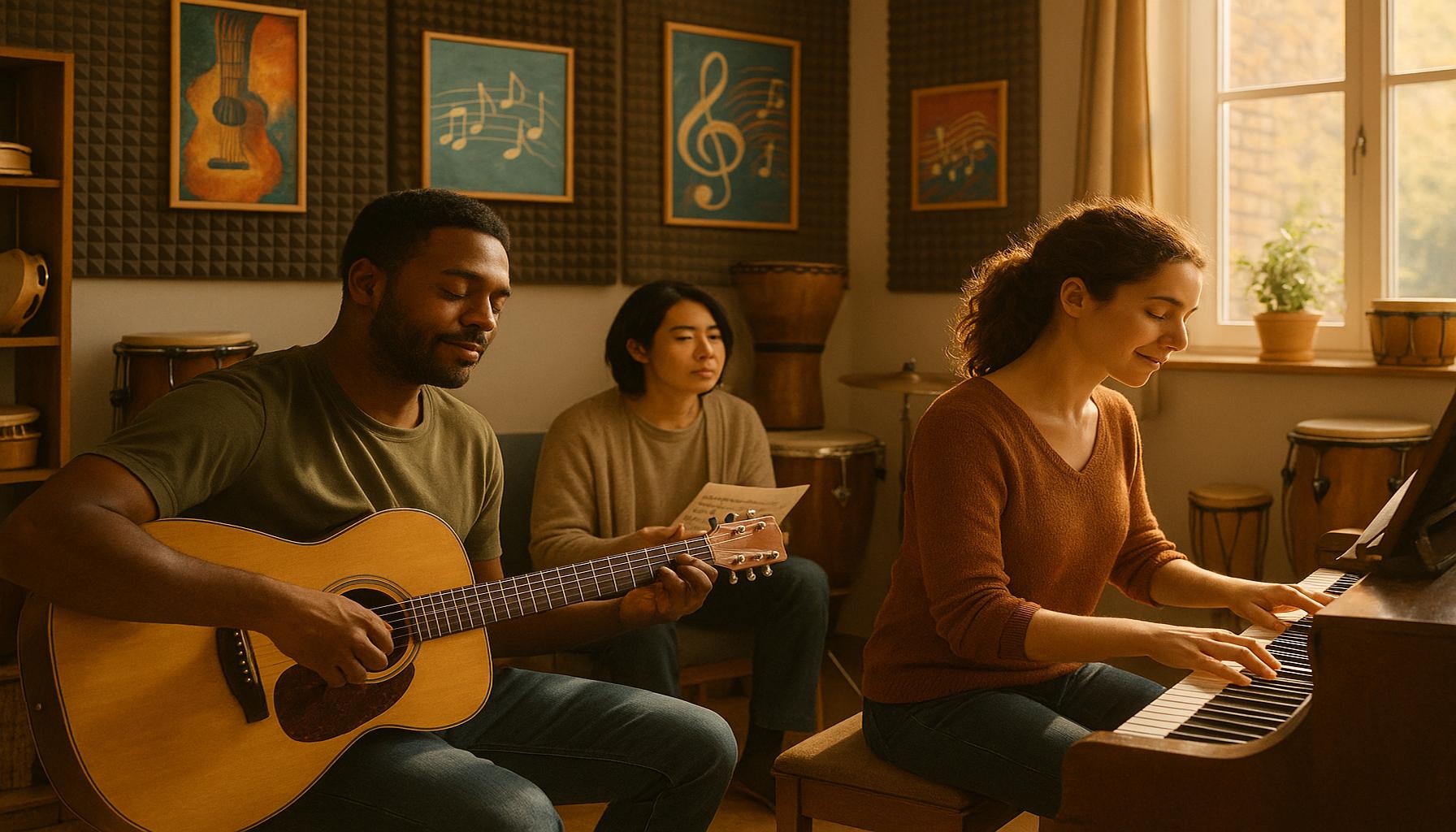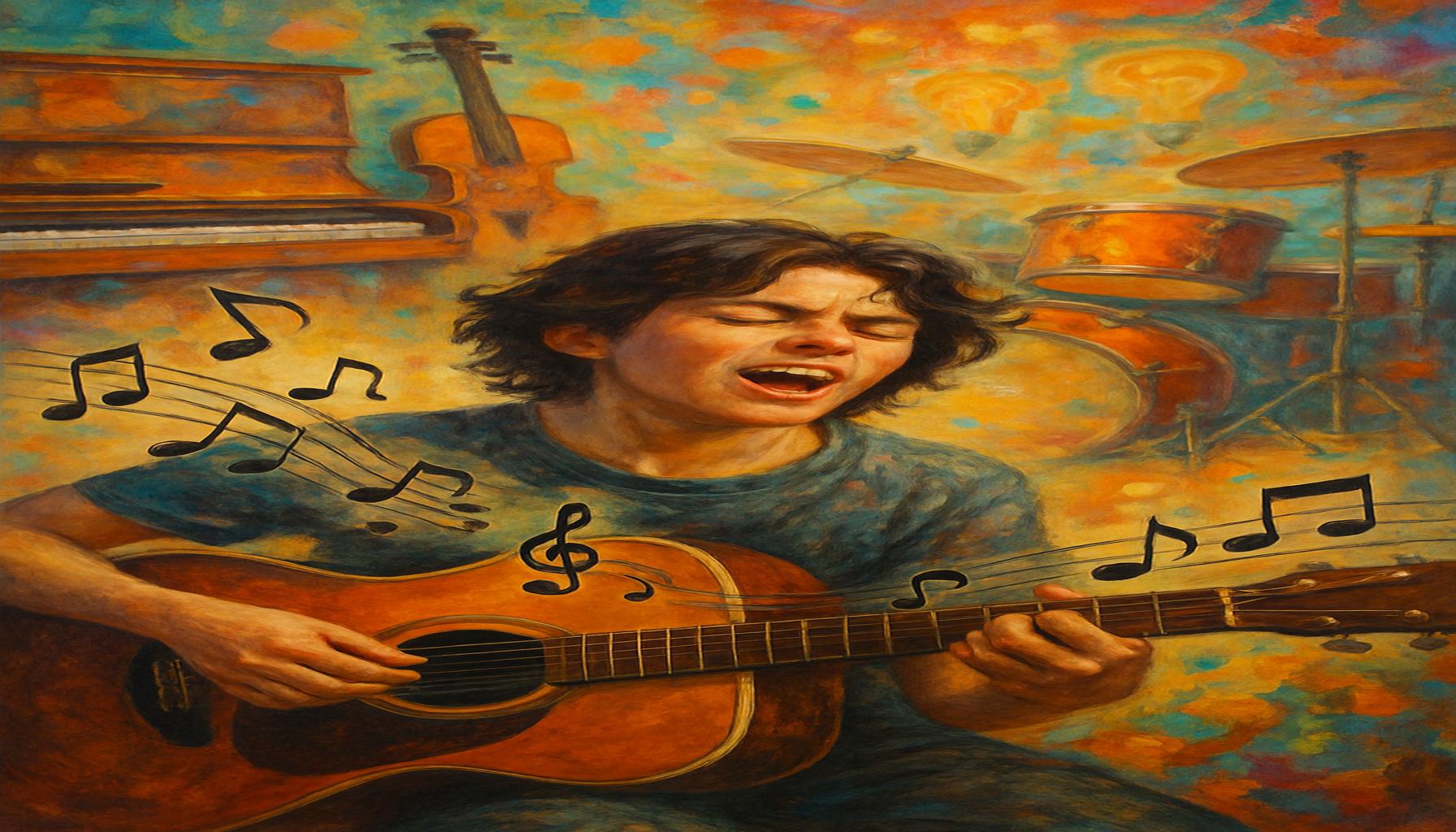The Influence of Social Media on the Rise of New Musical Talents and Collaborative Creation
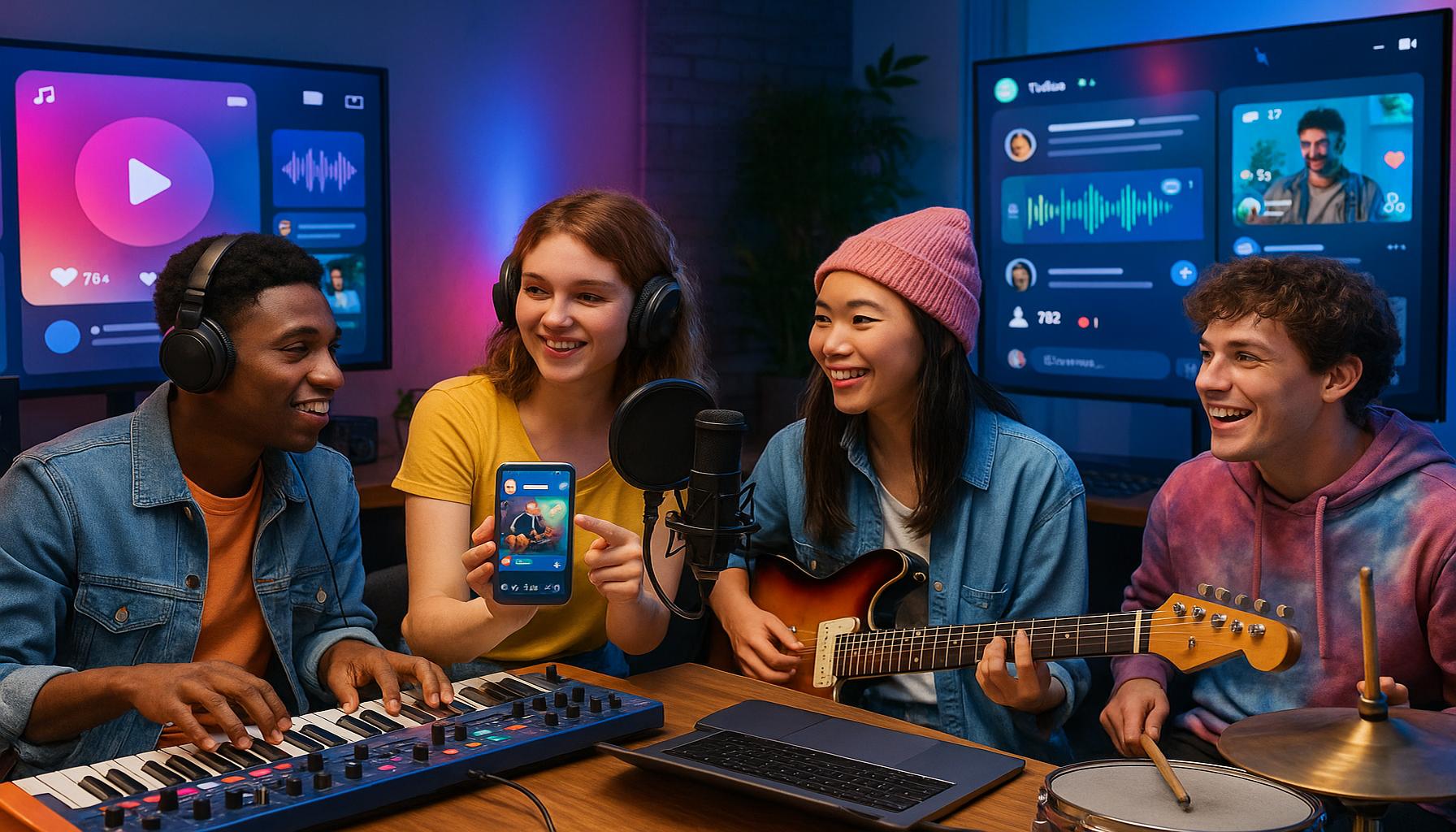
The Transformative Role of Social Media in the Music Industry
In today’s digital landscape, social media has revolutionized the way music is produced, shared, and consumed. Platforms such as Instagram, TikTok, and YouTube have emerged as essential tools for artists, redefining traditional pathways to fame and audience engagement.
Take, for instance, emerging artists who harness the power of social media to break into the industry without relying on record labels. Platforms like TikTok have become incubators for musical talent, where a song can go viral overnight, propelling it to the top of the charts. A notable example is Lil Nas X, whose hit “Old Town Road” gained popularity through TikTok memes, showcasing how a new artist can captivate millions with creativity and direct access to audiences.
The impact of social media extends beyond mere exposure. One of the most significant advantages is the real-time feedback that artists receive from listeners. This instant interaction allows musicians to gauge audience reactions, tailor their content, and adapt their artistic direction swiftly. For example, when Billie Eilish released her single “bad guy,” she used social media to engage with her fans directly, leading to discussions that informed her subsequent releases and artistic choices.
Furthermore, social media has created a landscape ripe for collaboration opportunities. Artists can connect regardless of geographical boundaries, leading to innovative partnerships that would have been improbable in the pre-digital era. Consider the collaboration between Spanish reggaeton star J Balvin and American pop icon Beyoncé on “Mi Gente,” which merged distinct musical influences and reached global audiences through strategic social media engagement.
These platforms also foster a sense of community around music. Fans now engage directly with their favorite artists, enhancing loyalty and support in ways that were previously unimaginable. This direct line of interaction not only solidifies fandom but also encourages grassroots movements. Many independent musicians have cultivated substantial followings without ever signing with a major label, demonstrating that talent can rise based on community support and social media presence alone.
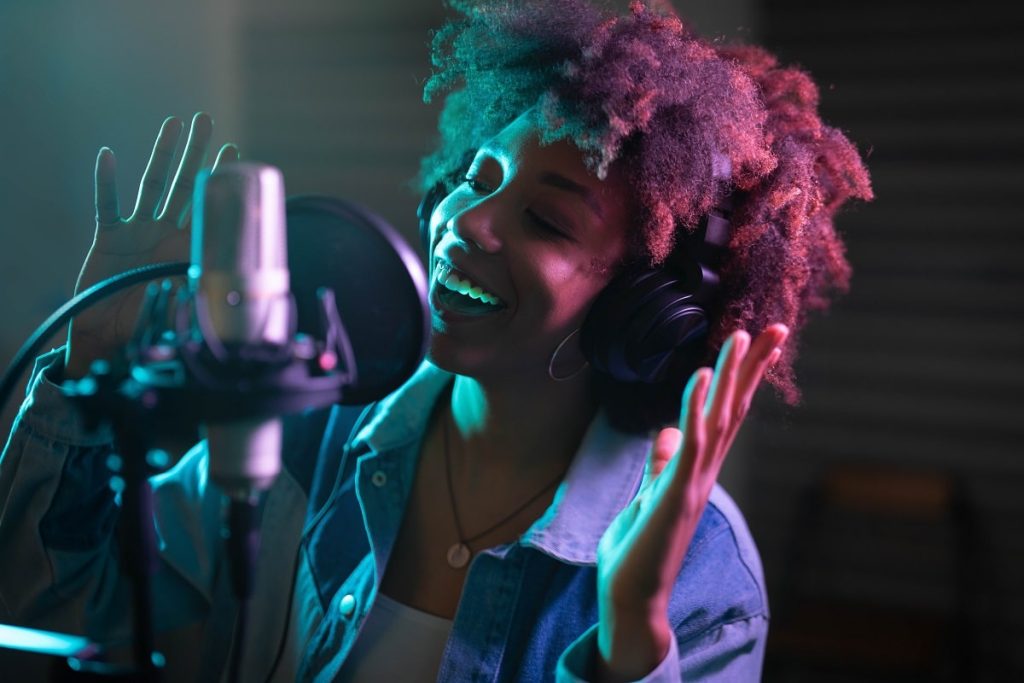
As we further explore this phenomenon, it becomes clear that social media continues to shape the music industry in profound ways, redefining how music is made, marketed, and consumed. The evolution of these platforms has not only changed the visibility of artists but has also expanded the boundaries of musical creativity, paving the way for a more inclusive and dynamic industry.
DIVE DEEPER: Click here to uncover more about transforming moments into art
The Empowerment of New Artists through Social Media
The soaring influence of social media on the music industry has created a platform for new musical talents to emerge and flourish. Gone are the days when aspiring artists had to navigate the complex maze of talent scouts and record labels to achieve recognition. Today, with a mere smartphone and an internet connection, musicians can share their creations with the world, often leading to remarkable success stories.
According to a report by Statista, as of 2023, approximately 4.9 billion people globally use social media, meaning a vast audience is readily available for artists to tap into. This unprecedented access allows them to promote their music, showcase their personalities, and connect with fans directly. A fascinating example is the singer-songwriter Olivia Rodrigo, who gained viral recognition through her relatable TikTok videos, propelling her debut album, “SOUR,” to critical acclaim and commercial success.
Moreover, social media facilitates an environment of collaboration and creativity that enhances the artistic process. Artists can find like-minded individuals across the globe, leading to the birth of unique collaborations. Genres blend, styles merge, and musical boundaries dissolve as collaboration flourishes through platforms like SoundCloud, Instagram, and Twitter. This phenomenon has given rise to innovative works that encapsulate various cultural influences. For instance, the collaboration between electronic artist Flume and singer Kai is a perfect illustration of how artists from different backgrounds can create chart-topping hits that resonate with diverse audiences, expanding their reach far beyond geographical limitations.
The power of social media extends to audience engagement, enabling artists to cultivate relationships with their fans. Unlike traditional media, where interactions are often one-sided, social media allows for a dynamic exchange. Artists can ask for input on new music, share behind-the-scenes content, and build anticipation through live streams and Q&A sessions. Notable examples of this interactive approach include the use of Instagram Stories and TikTok challenges, where artists invite fans to participate in creative ways, further solidifying their connection. This increased visibility can lead to devoted fan bases that actively promote an artist’s work, ultimately amplifying their success.
As the music scene continues to evolve, it is essential to recognize the role of social media as a powerful tool for talent discovery and collaborative creation. A few key trends highlight this transformation:
- Viral Trends and Challenges: Platforms like TikTok have given rise to viral music challenges, often launching unknown tracks into mainstream success.
- Diverse Collaboration: Global connectivity has allowed artists from different regions to collaborate, resulting in unique fusions of musical styles.
- Influencer Partnerships: Artists often partner with social media influencers to expand their reach, leveraging the influencer’s established audience.
- Fan-Driven Content: Audiences create derivative content—remixes, dance challenges, or cover videos—further promoting the original artist.
As we delve further into the impact of social media on the music industry, it’s evident that the relationship between artists and their followers has transformed significantly, leading to a renaissance in music creation and collaboration.
The Role of Social Media in Identifying Talent
Social media platforms, such as Instagram, TikTok, and YouTube, have revolutionized the way new musical talents are discovered. These platforms allow aspiring musicians to showcase their creations directly to a global audience, cutting out the traditional gatekeepers of the music industry. As a result, countless artists have gained exposure and built dedicated fanbases without needing a record label behind them. Musical trends spread rapidly through social media, allowing niche genres to flourish and connecting communities that share similar tastes. Hashtags and trending challenges create opportunities for musicians to participate in viral moments, further increasing their visibility. Collaborations between artists also occur more organically as they reach out to one another across various platforms, leading to unique blends of styles and innovation.
Collaborative Creation in the Digital Age
The era of collaborative creation is indeed upon us, powered by the connectivity fostered by social media. Platforms like SoundCloud and Bandcamp enable artists to share their work easily and invite others to contribute, resulting in songs that reflect a fusion of influences and creativity. Moreover, tools such as virtual meeting software and cloud-based DAWs (Digital Audio Workstations) allow musicians from different geographic locations to work together seamlessly. In this environment, creativity knows no bounds; artists can collaborate with producers, songwriters, and even visual artists to create a richer, multi-faceted musical experience. This collaborative spirit is essential in the modern music landscape, as shared innovation leads to exciting outcomes that captivate audiences. Through these new approaches to music creation, we witness the rise of a more diverse and inclusive music scene. Talented individuals from various backgrounds can share their perspectives, enriching the overall tapestry of contemporary music. Therefore, the impact of social media is indeed profound, shaping not just how talent is discovered, but also how it is cultivated and celebrated in collaborative creations.
| Advantage | Description |
|---|---|
| Increased Visibility | Social media provides an open platform for new talents to reach global audiences. |
| Collaborative Opportunities | Musicians can easily connect and collaborate, leading to innovative musical styles. |
The symbiotic relationship between social media and music is set to evolve further, continually shaping both talent discovery and musical collaboration for years to come.
LEARN MORE: Click here for insights on how art can uplift your mental well-being
The Dynamics of Music Promotion and Fan Engagement
With the exponential growth of social media, the dynamics of music promotion have transformed immensely, granting emerging artists unprecedented capabilities to market themselves. The traditional methods of album release and radio play have slowly taken a backseat as artists embrace platforms like Spotify and Apple Music to deliver their music directly to audiences. For many new talents, the challenge is no longer simply getting noticed; rather, it is about crafting a brand and establishing a unique identity amidst the overwhelming array of content saturating the digital space.
The phenomenon of the “release strategy” has evolved, with musicians opting for singles and episodic music delivery to engage their audiences consistently. Social media plays a critical role in these strategies; platforms allow them to tease upcoming tracks with snippets, exclusive previews, and visual storytelling through creative videos. Much like the exciting approach taken by Billie Eilish, who regularly shares hidden details about her artistry and personal reflections on channels like TikTok and Instagram, this tactic creates anticipation and feeds fan curiosity.
Furthermore, the phenomenon of live streaming has gained ground, especially post-pandemic, giving artists a direct line to their fans. Websites and platforms such as Facebook Live, YouTube, and Twitch enable musicians not just to perform but to create a sense of intimacy. These virtual events often foster a participatory atmosphere, inviting fans into their creative space and making them feel like integral components of the artist’s journey. For instance, singer-songwriter Hozier used live streaming to connect with fans while sharing the inspirations behind his songs, solidifying that bond while generating excitement for forthcoming projects.
Analytics offered by social media platforms also play a significant role in shaping how artists develop their music. Musicians now have access to real-time insights on listener demographics, engagement metrics, and geographic hotspots. With this information, emerging talents can make informed decisions on their music styles, collaborate on projects that resonate with their listeners, and even determine optimal release dates. This data-driven approach has further democratized the industry, allowing less established artists to make smart tactical choices typically reserved for major labels.
Moreover, the potential for collaborative creation has expanded with social media’s rise. Musicians can now co-write songs with other artists across great distances, thanks to collaborative tools and accessible communication. This has led to cross-genre experimentation and the emergence of hybrid musical styles. Platforms like Splice and BandLab enable creators to share musical ideas instantly, bridging the gap between various musical influences, honing collaborations that were once difficult to achieve without physical proximity. The wildly successful song “Stay” by The Kid LAROI and Justin Bieber exemplifies how artists from different genres and backgrounds can seamlessly work together to produce chart-topping hits, all thanks to the collaborative spirit fueled by social media.
As the landscape of the music industry continues to shift, the role of social media in the rise of new musical talents and innovative collaborations cannot be overstated. Musicians today are empowered with tools that facilitate not only their artistic expression but also their connection to fans and fellow creators, making the possibilities for musical innovation virtually limitless.
DISCOVER MORE: Click here to dive into the world of urban street photography
Conclusion: Embracing the New Era of Music
In conclusion, the influence of social media on the rise of new musical talents and collaborative creation marks a significant transformation in how music is produced, promoted, and experienced. The traditional barriers that once defined the music industry have been dismantled, allowing aspiring artists to harness the power of social platforms to share their work and build their brands. The ability to engage with fans through live streaming, interactive content, and personalized storytelling fosters a sense of community that was previously unattainable.
The use of real-time analytics empowers musicians with data-driven insights that guide their creative choices and marketing strategies, ensuring that their artistry resonates with a wider audience. Moreover, tools that facilitate remote collaborations have expanded creative horizons, encouraging cross-genre experimentation and the emergence of unique musical styles that reflect diverse influences. As demonstrated by the success of various artists, including the collaborations between established musicians and newcomers, this collaborative spirit is redefining what it means to create music in today’s digital landscape.
As we move forward, it is essential for both artists and listeners to navigate this evolving terrain with an open mind. The evolving dynamics of music creation, coupled with the innovative possibilities afforded by social media, promise a vibrant future for the industry. For those who embrace these changes, opportunities abound to not only showcase talent but also to participate in a global dialogue around the art of music. The question remains: how will the next wave of artists leverage social media to carve their own paths, redefine genres, and unite audiences across the globe? Only time will tell, but the potential is undeniably exciting.
